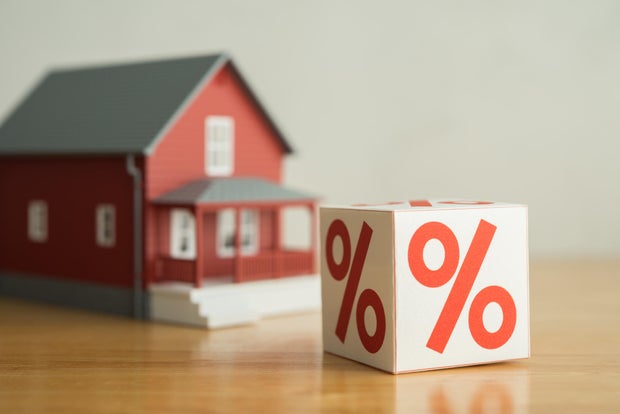Getty Images
Interest rates on home equity lines of credit (HELOCs) seem to be on a downward trend again. That was one big takeaway in the home equity borrowing market this week as rates on the popular product declined to an average of just 8.13%, according to new Bankrate data. That came after HELOC rates declined slightly at the end of July, though the latest 13 basis point drop was more significant than the marginal one at the end of last month. Still, at a rate close to 8% now, a HELOC isn’t just the cheapest way to borrow home equity right now, it’s one of the cheapest ways to borrow money overall.
With your home as collateral, however, and a variable interest rate subject to change monthly based on market conditions, should homeowners open a HELOC now anyway? Or would they be better served with alternative options? That’s what we’ll examine below.
Start by seeing how low of a HELOC rate you’d be eligible for here.
Should you open a HELOC with rates falling again?
Borrowing with a variable rate product often comes down to timing (and a little luck). Fortunately, both look favorable for prospective HELOC borrowers right now. Here are three reasons why it could be worth pursuing currently:
Rate cuts appear imminent
A HELOC is inherently risky for borrowers when rates are high and are positioned to increase. But that’s not the circumstance right now as Fed rate cuts increasingly appear likely for when the central bank meets again in September (the CME Group’s FedWatch tool has a cut listed at a more than 91% likelihood as of August 7).
While a Fed rate cut won’t directly reduce HELOC rates, it will help as HELOC rates are partially driven by the bank’s rate adjustments. In other words, the rate you secure your HELOC with now is likely to be lower in September and, potentially, further into the fall, allowing you to save more in costs and focus more on the reasons why you needed the line of credit in the first place.
Compare your current HELOC rate offers online today.
Home equity loans won’t be responsive to market adjustments
Home equity loans, on the other hand, have fixed interest rates, making them an ideal option in a volatile or rising rate climate … but less favorable in today’s environment. Home equity loans won’t be responsive to market adjustments the same way a HELOC will, meaning that the disparity in rates between the two products can and likely will become stark.
HELOCs are already more than 10 basis points lower, on average, than home equity loans, but if rate cuts are issued in the months to come, the difference between a locked home equity loan rate now versus the variable HELOC one later could become even more pronounced. Still, this works both ways, so only pursue the HELOC if you’re relatively confident in the direction of the economy.
Your alternative options are still too expensive
Average credit card interest rates are around 21% now, just under a record high set in 2024. Median personal loan interest rates, however, are materially lower but still comfortably in the double-digit range right now. And home equity loan rates, as noted above, are both higher than HELOCs now and likely to be significantly more expensive if locked in before new rate cuts are formalized.
With alternative options like these all still too expensive for homeowners, then, a HELOC becomes the natural choice for those who want to borrow a large sum of money at a lower interest rate.
The bottom line
With HELOC interest rates falling to a three-month low this week, homeowners in need of affordable financing may want to take action. With rate cuts looming and, thus, the potential for HELOC rates to decline further, the reality of a higher, locked home equity loan rate as an alternative and double digit interest rates on options like personal loans and credit cards, a HELOC is not only one of your better ways to borrow money currently but it’s likely to remain so for the foreseeable future.
Have more questions? Learn more about borrowing with a HELOC online today.



